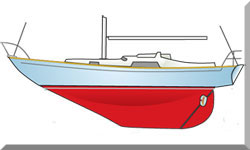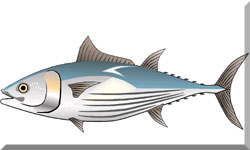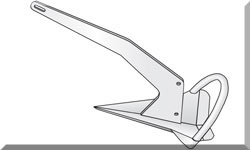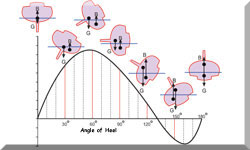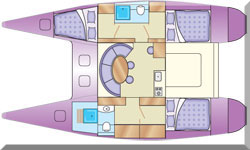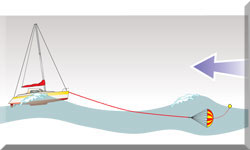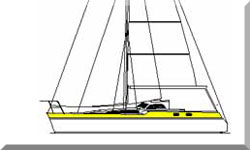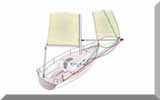- Home
- Hurley Sailboats
Hurley Sailboats: Your Guide to These Seaworthy Cruisers
If you're casting about for a sturdy, reliable sailboat that holds its value, chances are you've stumbled across Hurley sailboats.
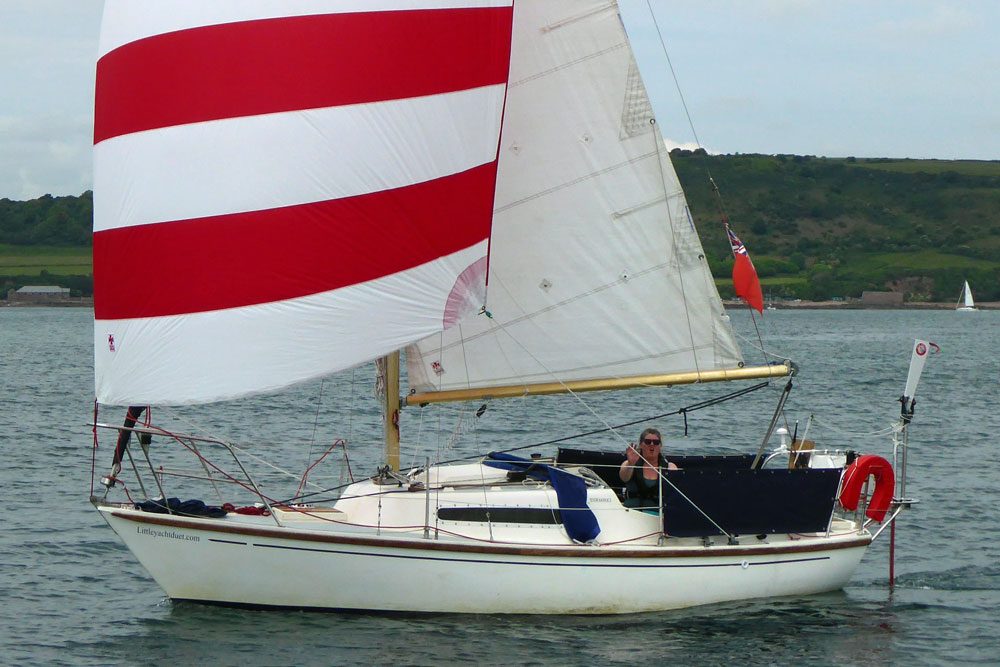 Hurley 22
Hurley 22These British-built beauties, born from a straightforward vision of accessible yet truly capable cruising, have quietly built a dedicated following. Decades after they first slipped into the water, you'll still spot plenty of these dependable Hurley sailboats gracing anchorages and coastal waters worldwide. They're more than just boats; they're a testament to solid design and honest craftsmanship.
From a Humble Shed to a Shipyard: The Hurley Story
The tale of Hurley Marine starts quite unpretentiously in Plymouth, Devon, back in the late 1950s. George Hurley, a man with a clear vision and a good deal of entrepreneurial spirit, began what some say was a backyard venture that blossomed into a surprisingly prolific boatbuilding operation. While he dabbled in caravans and commercial vehicles initially, the burgeoning recreational boating market soon became his true calling.
A pivotal moment arrived with the Silhouette. First launched in 1954 as a plywood marvel, its popularity soon nudged Hurley Marine towards embracing Glass Reinforced Plastic (GRP) construction. By the 1960s, the company had become a heavyweight, churning out a remarkable 8,000 boats. Production by the original firm wound down in 1974, but the robust nature of their designs meant others picked up the torch. Firms like South Coast Marine and Ravensail (who notably continued the Hurley 22R) kept building these beloved designs until as late as 1991. Just to be clear, the Hurley Marine you might find in Michigan, USA, these days, specializing in davits, is a completely separate entity.
What Makes a Hurley Tick: Design & Features
When you talk about Hurley sailboats, one name often comes up: Ian Anderson, the naval architect behind many of their enduring models, including the iconic Hurley 22 and the Felicity. The earlier, charmingly small Silhouette, however, was a Robert Tucker design. The heart of Hurley Marine's philosophy was simple: put seaworthiness and a solid hull shape first. They weren't chasing breakneck speed or cavernous interiors; their priority was a boat that could look after you. This practical approach resulted in Hurley sailboats famed for their ability to shrug off challenging conditions.
Their signature look often includes a sensible, effective hull with a fine entry at the bow and a full midsection that gives them fantastic buoyancy and stability. Earlier GRP Hurley sailboats, like the ever-popular Hurley 22, frequently sported a long keel with a small spade rudder – a setup that proved surprisingly capable and comfortable in a seaway.
Later boats and other models also offered fin keel and bilge keel options. The Hurley 18, 20, and 22 shared a common design ethos, effectively scaling down the proven characteristics of larger, deep-keeled yachts. Their audience was clear: recreational sailors seeking a truly capable coastal cruiser, with many of these Hurley sailboats proving themselves more than ready for ambitious offshore adventures.
Built Like a Tank: How Hurley Sailboats Were Made
Hurley Marine earned a rock-solid reputation for building boats that would simply last. Their primary material was GRP (fibreglass), and those hulls were often hand-laid. This switch from earlier plywood versions (like the very first Silhouette) was a game-changer, ensuring incredible durability, less fuss with maintenance, and consistent quality across their range of Hurley sailboats.
Construction meant strong, thick fibreglass hulls and decks. Interiors, while designed for efficient manufacturing, were often smartly moulded, then softened and made inviting with traditional mahogany trim and Afrormosia handrails. The cast iron ballast keels were typically bedded deeply into the hull moulding and secured with epoxy, sometimes reinforced with galvanized steel straps to distribute the load. This commitment to robust construction is a huge part of why Hurley sailboats are still so highly regarded today.
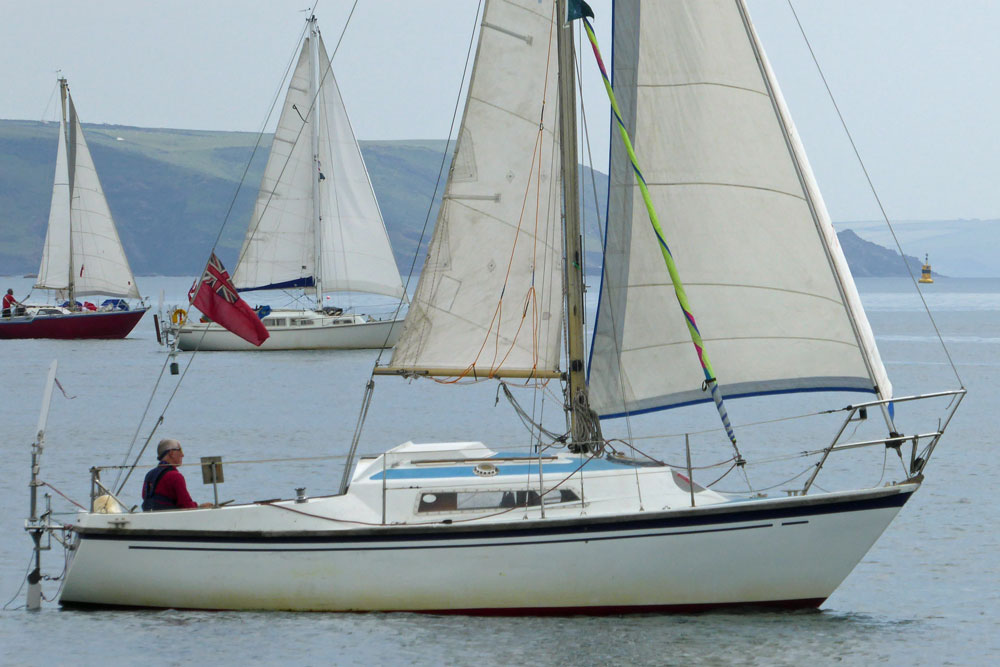 A Hurley 24
A Hurley 24 Note: This one has been retro-fitted with a staysail (or maybe a storm jib) on an inner forestay
Meet the Fleet: The Popular Hurley Models
Hurley Marine produced a commendable fleet of Hurley sailboats, with several models achieving almost legendary status.
The Pioneers
The Silhouette, initially plywood and later GRP, was the bedrock. Over 2,500 were built, truly putting Hurley on the map for recreational sailors. The Felicity 20, designed by Ian Anderson in '61, stepped in as a more comfortable, slightly larger option. The Alacrity 19 also emerged around the early 1960s.
The Icons
Without a doubt, the Hurley 22 is their most celebrated success story, with more than 1,200 leaving the Hurley Marine yard between 1966 and 1975. Its lasting popularity even saw other builders continue its production well into the 1990s. The Hurley 18 and Hurley 20 shared that same design philosophy as the Hurley 22, prioritizing a proper sailing hull and genuine seaworthiness, quickly becoming known as capable pocket cruisers.
The Bigger Sisters
For those needing more space, the Hurley 24/70 and the Hurley 27 offered increased accommodation. The Hurley 30/90 was the largest in the original family of Hurley sailboats, though built in more limited numbers.
Across the range, Hurley sailboats generally evolved from earlier plywood to mainly GRP, and from traditional long keels to options including fin and bilge keels, catering to different sailing styles and tidal conditions. But the core commitment to a solid, seaworthy hull never wavered.
On the Water: Performance & Ocean Readiness
Hurley sailboats generally get high marks for how they handle under sail, particularly for their stability and seaworthiness. Folks often describe them as "stiff" boats, meaning they stand up well to their sails in a breeze, maintaining a balanced feel and a comfortable motion even when the seas get lumpy. While perhaps not the fastest boats out there, their ability to slice through waves and work efficiently to windward makes them reliable companions for coastal hops and even much grander voyages.
The blue-water capability of Hurley sailboats isn't just talk; it's a proven reality. We're talking about numerous Hurley 22s that have successfully crossed the Atlantic, and at least one that's ventured across the vast Pacific. Even the smaller Hurley 18s have found their way to far-flung cruising grounds. A Capsize Screening Formula of 1.9 for the Hurley 22, for instance, underlines its suitability for ocean passage-making. These truly seaworthy small sailboats have a knack for "looking after you in adverse conditions"—a real credit to Ian Anderson's clever designs.
Life Onboard: Cozy & Practical Spaces
The interiors of Hurley sailboats, especially the more compact models, are best described as simple, functional, and genuinely cozy. While space is cleverly managed within their modest hulls, the design always put practicality and security at sea first. You'll often find that classic mahogany trim and joinery, lending a warm, unmistakably nautical feel.
Take the Hurley 22 for instance; typically, you'll find a V-berth forward (often converting to a double) and quarter berths, allowing four people to snug down, albeit closely. Despite their size, Hurley sailboats are known for a surprising sense of depth inside, offering a reassuring "haven below." Plenty of lockers and smart storage solutions were usually built-in, ensuring your gear stayed put. Even if standing headroom was a bit tight on smaller models like the Silhouette 17, the overall aim was practical, comfortable cruising spaces, with secure handholds and ample storage prioritized over wide-open layouts.
What Owners Say: Reputation & Resale
Hurley Marine really earned its stripes within the sailing community, known for churning out well-built, reliable, and exceptionally seaworthy yachts. Their clientele? Recreational sailors who valued rugged capability over outright luxury or racing prowess. That focus has truly paid off in the long run.
These days, used Hurley sailboats are still very popular on the market. They're often seen as an excellent starting point for anyone getting into sailing and cruising, largely thanks to their solid build and relatively affordable price tag. Their lasting appeal is clear; you'll find them holding their own in marinas and cruising grounds all over the globe.
A huge part of this continuing story is the active Hurley Owners Association, a vibrant online hub where enthusiasts share advice, lend support, and even organize meet-ups. This strong community only adds to the appeal, offering a wealth of shared experience. The true legacy of Hurley sailboats is simply this: they built thousands of proper little ships that continue to deliver safe, enjoyable sailing for generations, often outliving much more modern and complicated designs.
Things to Know Before You Buy: Common Issues
While generally lauded, Hurley sailboats, like any classic vessel, come with a few things to keep in mind. As older boats, potential buyers should expect the usual maintenance and refurbishment needs that come with age. For instance, some Hurley 24 models have been reported to have mast compression issues, something worth checking if you're looking at one. Also, a few Hurley 24s apparently used lead shot ballast with mild steel strapping; if water gets in, that steel could corrode and cause the GRP hull to swell.
Moreover, while incredibly seaworthy, their design, which put capability over sheer speed, means they might not be the quickest in very light winds – sometimes a bit of motor-sailing becomes necessary. The Comfort Ratio for a Hurley 22, for example, suggests a motion typical of a coastal cruiser. This might be a small consideration for those prone to seasickness on longer trips, though their inherent stability usually helps.
Beyond the Boats: Noteworthy Tales
Beyond the names George Hurley, Ian Anderson, and Robert Tucker, the real stories of Hurley sailboats are told through the voyages their owners have embarked upon. The sheer fact that numerous Hurley 22s have crossed oceans, proving their mettle against the vastness of the Atlantic and Pacific, speaks volumes about their inherent capability and the deep trust owners place in them. These plucky, stout vessels have often been the chosen companions for adventurous singlehanded sailors, embodying that spirit of accessible offshore exploration.
The Hurley Bottom Line: Are They Right For You?
Hurley sailboats represent a significant chapter in British boatbuilding, all starting with George Hurley’s vision for capable, accessible cruising boats. Under the keen eye of designers like Ian Anderson, models such as the Hurley 22 became hugely popular, celebrated for their exceptional seaworthiness, robust GRP construction, and practical interiors. Though the original company is no longer building them, their enduring appeal is kept alive by a thriving Hurley Owners Association and their impressive track record on the world's oceans. For any recreational sailor searching for a reliable, value-for-money vessel with genuine offshore capabilities, a Hurley sailboat remains a compelling choice—a true testament to proper boatbuilding.
Sources & References
- The story - Hurley Owners Association
- The Hurley 20 - OoCities.org
- Hurley 22 - Design & Construction - OoCities.org
- Silhouette 17 used boat review: This pocket cruiser can be a real bargain
- How different yacht types change sailing characteristics
Recent Articles
-
Ohlson 38 Guide: Specs, Performance Analysis & Cruising Review
Jan 07, 26 05:52 AM
Discover the Ohlson 38 sailboat. An in-depth look at its Einar Ohlson design, Tyler GRP construction, performance ratios, and why it remains a top choice for offshore sailors. -
Passoa 47 Sailboat Review: Comprehensive Specs & Performance Analysis
Jan 04, 26 04:57 AM
Discover the Passoa 47, a legendary aluminium blue water cruiser by Garcia. Explore technical specifications, design ratios, and why its lifting keel is a game-changer for offshore sailors. -
Sailboat Wheel Steering Maintenance & Inspection Checklist
Dec 30, 25 02:32 PM
Keep your vessel’s helm responsive and reliable with our expert maintenance checklist. Master cable tensioning and system inspections to avoid mid-passage failures.


